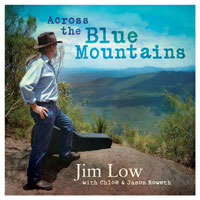JOURNAL OF A TOUR OF DISCOVERY ACROSS THE BLUE MOUNTAINS, in the year 1813, by Gregory Blaxland
On the 29th, having got up the horses and laden them, they began to descend the mountain (Mt. York) 35 at seven o'clock through a pass in the rock, about thirty feet wide, which they had discovered the day before, when the want of water put them on the alert. 36 Part of the descent was so steep that the horses could but just keep their footing without a load, so that, for some way, the party were obliged to carry the packages themselves. A cart road might, however, easily be made by cutting a slanting trench along the side of the mountain, which is here covered with earth. This pass is, according to their computation, about twenty miles north-west, in a straight line from the point at which they ascended the summit of the mountains. 37 They reached the foot at nine o'clock a.m., and proceeded two miles north-north-west, mostly through open meadow land, clear of trees, the grass from two to three feet high. They encamped on the bank of a fine stream of water. 38 The natives, as observed by the smoke of their fires, moved before them as yesterday. The dogs killed a kangaroo, which was very acceptable, as the party had lived on salt meat since they caught the last. The timber seen this day a ppeared rotten and unfit for building.
ppeared rotten and unfit for building.
Sunday, the 30th, they rested in their encampment. One of the party shot a kangaroo with his rifle, at a great distance across a wide valley. The climate here was found very much colder than that of the mountain or of the settlements on the east side, where no signs of frost had made its appearance when the party set out. During the night the ground was covered with a thick frost, and a leg of the kangaroo was quite frozen. From the dead and brown appearance of the grass it was evident that the weather had been severe for some time past. We were all much surprised at this degree of cold and frost in the latitude of about 34 degrees. The track of the emu was noticed at several places near the camp.
On the Monday they proceeded about six miles, south-west and west, through forest land, remarkably well watered, and several open meadows, clear of trees, and covered with high good grass. They crossed two fine streams of water. 39 Traces of the natives presented themselves in the fires they had left the day before, and in the flowers of the honeysuckle tree scattered around, which had supplied them with food. These flowers, which are shaped like a bottle-brush, are very full of honey. The natives on this side of the mountains appear to have no huts like those on the eastern side, nor do they strip the bark or climb the trees. From the shavings and pieces of sharp stones which they had left, it was evident that they had been busily employed in sharpening their spears.
The party encamped by the side of a fine stream of water, at a short distance from a high hill, in the shape of a sugar-loaf. 40 In the afternoon they ascended its summit, from whence they descried all around, forest or grass land, sufficient in extent in their opinion, to support the stock of the colony for the next thirty years. This was the extreme point of their journey. The distance they had travelled they computed at about fifty-eight miles nearly north-west; that is, fifty miles through the mountain, (the greater part of which they had walked over three times,) and eight miles through the forest land beyond it, reckoning the descent of the mountain to be half-a mile to the foot.
.


